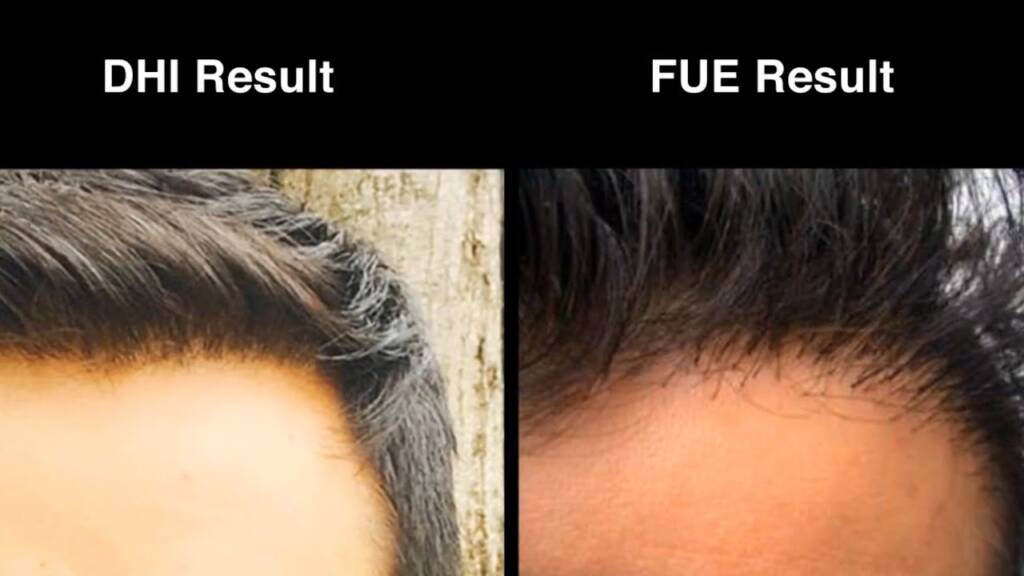
Hair loss affects millions of people around the world, and modern hair transplant techniques offer effective and natural-looking solutions. Among the most advanced methods are FUE, or Follicular Unit Extraction, and DHI, or Direct Hair Implantation. Both procedures aim to restore hair in thinning or bald areas, but they differ in how the hair is extracted and implanted.
In this guide, we explain the differences between FUE and DHI, their benefits, and how to decide which approach may be right for you.
What is FUE Hair Transplant
FUE is a highly popular hair restoration technique used worldwide. It involves removing individual hair follicles from the donor area, usually the back or sides of the head where hair is more resistant to balding.
The process involves the following steps
Local anaesthesia is applied for comfort
Individual hair follicles are carefully extracted using a small punch tool
Tiny incisions or channels are created in the areas where hair is needed
The follicles are implanted into these incisions one by one
Advantages of FUE
The scarring is minimal and almost invisible even with short hair
Recovery is typically quick with less discomfort
The technique allows for covering large areas of hair loss
The results look natural and blend well with existing hair
FUE is well suited for patients who want to treat larger bald patches and still maintain flexibility in future hair styling.
What is DHI Hair Transplant
DHI is a more recent innovation in hair transplant technology. It uses a specialised tool known as the implanter pen. Like FUE, follicles are taken individually from the donor area. However, with DHI, the follicles are directly implanted into the scalp using the implanter pen. There is no need to create channels or slits in advance.
The steps typically include
Local anaesthesia to numb the area
Extraction of individual follicles from the donor site
Immediate implantation of follicles using the implanter pen, which controls angle, depth, and direction
Advantages of DHI
Greater precision in hair placement
Excellent for creating a natural-looking hairline and high-density results
Less trauma to the scalp which may mean quicker recovery
Often no need to shave the recipient area
DHI is particularly popular among patients who want maximum density in smaller areas, such as the hairline, beard, or eyebrows.
Key Differences Between FUE and DHI
While both techniques are safe, effective, and minimally invasive, here is how they compare
| Feature | FUE | DHI |
|---|---|---|
| How channels are made | Channels created first, then follicles implanted | Channels and implantation done in one step with implanter pen |
| Hair shaving | Usually requires shaving donor and recipient area | Often no need to shave recipient area |
| Density | Good density | Can achieve higher density especially in small areas |
| Procedure duration | Shorter | May take longer due to precise placement |
| Cost | Generally more affordable | Usually higher due to technique and tools |
How to Choose Between FUE and DHI
Choosing the right method depends on several factors
The size of the area you want to treat
Your desired hair density
Whether you prefer not to shave the recipient area
Your budget
Your hair type and quality
An experienced hair transplant specialist will assess your scalp, donor hair, and goals to recommend the best option for you. In many cases, both techniques can offer excellent results when performed by skilled hands.
What to Expect After Your Hair Transplant
No matter which method you choose, proper aftercare is essential for the best results. Both FUE and DHI offer
Minimal downtime
Small scabs that heal within a week to ten days
New hair growth starting within a few months
Full results typically seen after 9 to 12 months
Your surgeon will provide detailed instructions to help protect your new grafts and encourage healthy hair growth.
Book a Consultation to Explore Your Options
If you are thinking about a hair transplant, the best first step is a private consultation. This allows a specialist to review your hair loss pattern, donor area, and expectations, and to create a plan that fits your needs.
A successful hair transplant is not just about the method but about careful planning, artistic skill, and personalisation.

